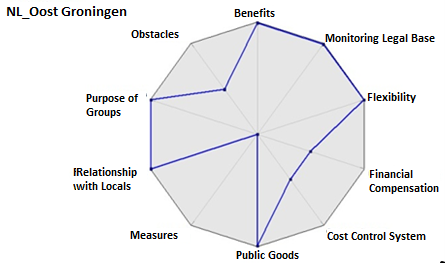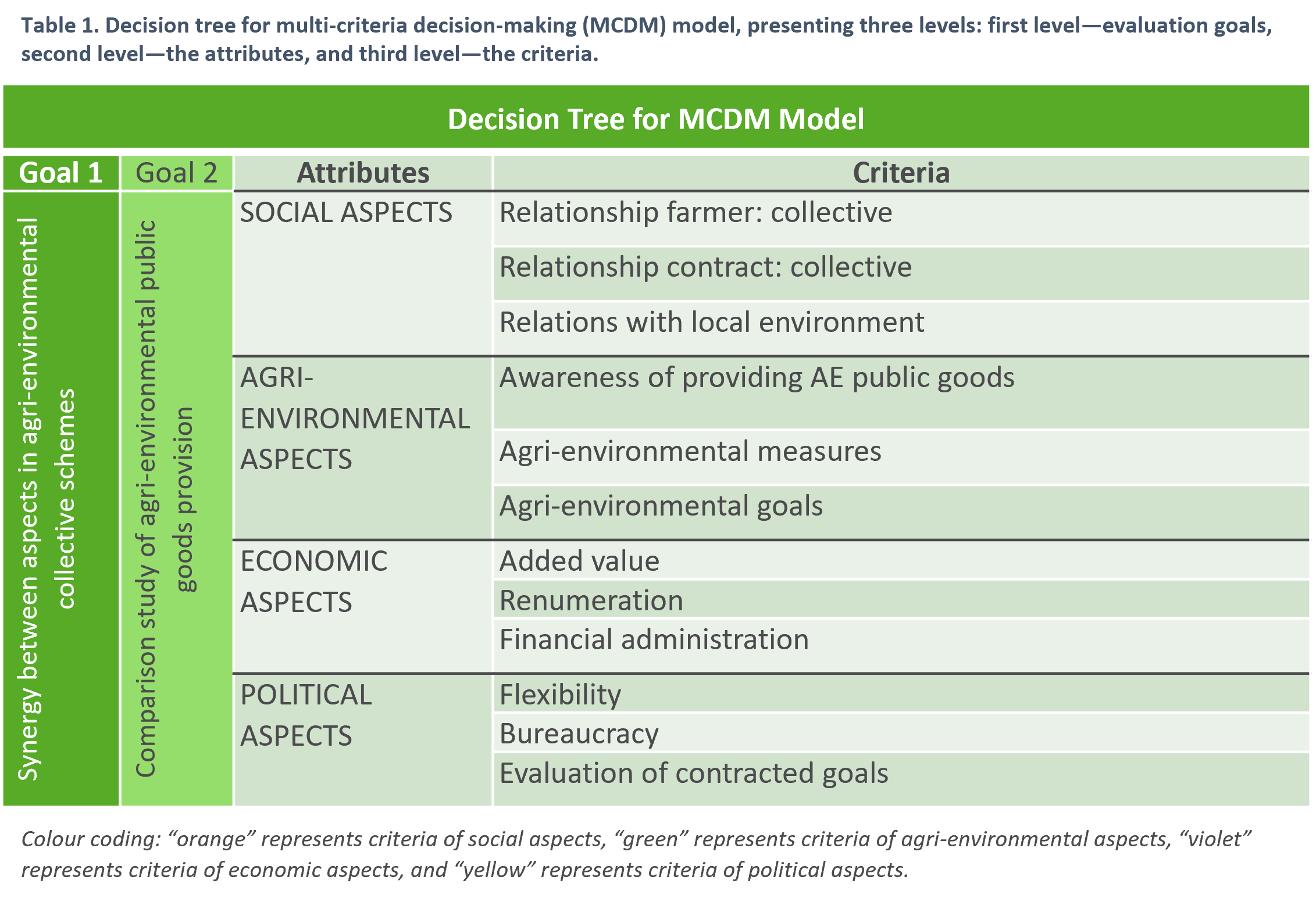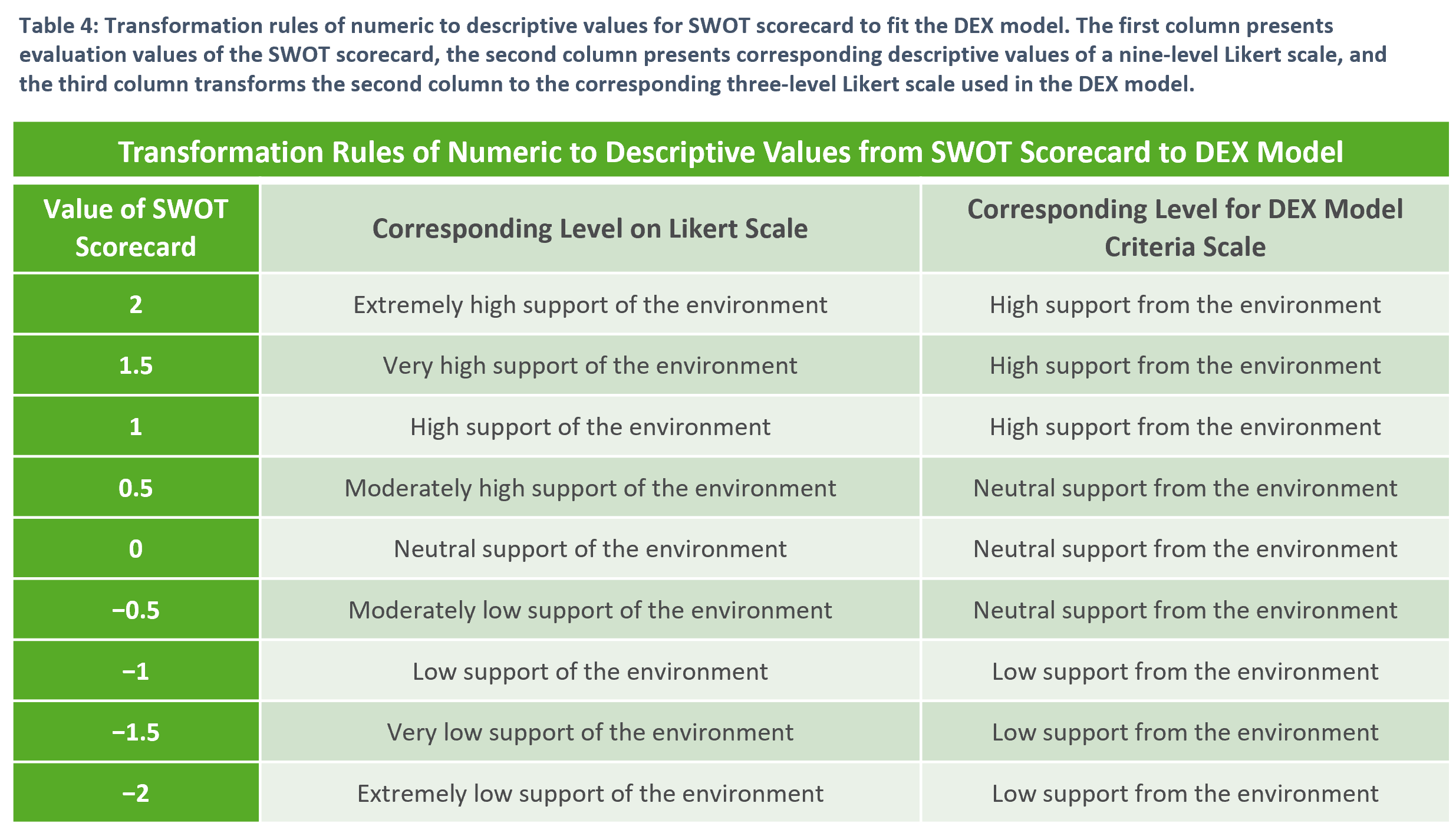It is challenging to identify the deciding success factors for an effective and efficient implementation of collective agri-environmental schemes (AES)usually comprise several agri-environment-climate measures (AECM). Synonym: Agri-environment-climate schemes See also: Agri-environment-climate measures (AECM), Payments for Ecosystem Services (PES) More. The relatively short implemantation phase of the collective model as a nationwide scheme and the diversified environment around the different implementation levels make identifying success factors a rather complex task. We found no common indicators or quantitative data to compare agricultural collectives regarding their performance to realize their environmental targets. So the question for us was: How to make the performance in different cases easily comparable and thus identify the relating success factors via a Multi criteria Decision Making model?
The only available data to tackle this question was qualitative data collected in SWOT analyses at the beginning of the project. Each Contracta formal, written agreement for a specified duration signed by (at least) two parties. In Contracts2.0, we acknowledge the existence of informal contracts but use formal contracts to focus the research. More Innovation Lab (CIL) was asked to complete a SWOT analysisSWOT stands for Strengths - Weaknesses - Opportunities - Threats. The SWOT analysis is used in strategic planning and is intended to identify key factors that are important for achieving a specific goal. Strengths and weaknesses a... More assessing internal and external factors that affect the effective provision of environmental public goodsPublic goods are non-rival (they cannot be exhausted) and non-excludable (there are no boundaries). An environmental example in the Contracts2.0 context is an open and beautiful landscape which can be enjoyed by one person without... More. However, the challenge remained to simultaneously compare the results of several SWOT analyses and use them in a multi-criteria decision-making (MCDM) model. To this end, we introduced a new technique: The SWOT scorecard (Rudolf and Udovč, 2022). Here we explain how we developed this new technique.
1. Preparing a decision tree for MCDM
In the first step of our modeling process, we created a decision tree, a decision support tool typically using a tree-like structure to visualize decisions and their potential consequences. We used an individual decision-making approach based on a qualitative analysis of the relevant literature. Using a hierarchical top-down approach, we identified the main goals and the corresponding attributes, criteria, and sub-criteria that should influence the synergy between aspects in the collective case studies.
The criteria are still being investigated and are not yet final. However, for testing the SWOT scorecard technique, they were appropriate.
2. From SWOT Scorecard to MCDM model
The following steps describe how the SWOT scorecard technique can be used to arrange qualitative data to feed into an MCDM DEX model.
Step 1: First, we organized descriptive SWOT results by criteria for every analyzed collective scheme, making sure to keep track of the origin of data (S, W, O, and T factors). This step gives us a set of so-called ‘prime input data.’
Step 2: We applied the SWOT scorecard technique, transforming the ‘prime input data’ with a formula to numeric results. The SWOT scorecard sums the importance of S, W, O, and T factors for the criteria.
Step 4: In the last step, the descriptive values are fed into the DEX model. The SWOT scorecard keeps track of the results from SWOT analysisSWOT stands for Strengths - Weaknesses - Opportunities - Threats. The SWOT analysis is used in strategic planning and is intended to identify key factors that are important for achieving a specific goal. Strengths and weaknesses a... More. It considers the diversity of collective schemes, which results in the appearance of common variables that can be described with the same name. This is key for comparing the collective schemes regarding environmental public goodsPublic goods are non-rival (they cannot be exhausted) and non-excludable (there are no boundaries). An environmental example in the Contracts2.0 context is an open and beautiful landscape which can be enjoyed by one person without... More delivery. Furthermore, we get results of success factors for any number of collective AES.
3. Towards a decision support tool
The DEX model is a first step towards building a decision support tool for decision-makers dealing with the design and implementation of collective AES, who would like to understand better the success factors contributing to an improved provision of environmental public goodsPublic goods are non-rival (they cannot be exhausted) and non-excludable (there are no boundaries). An environmental example in the Contracts2.0 context is an open and beautiful landscape which can be enjoyed by one person without... More. We are now building a user-friendly interface that links our database and the DEX model to make it accessible for decision-makers.
For more detailed information, check our paper, which was published in Sustainability, vol. 14 (2), 2022.
Written by: Janja Rudolf, Biotechnical faculty, University of Ljubljana (Slovenia)






